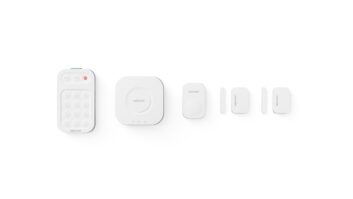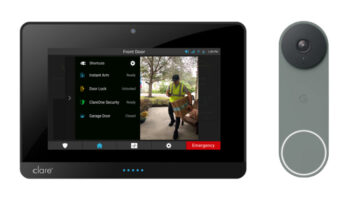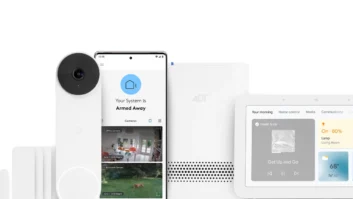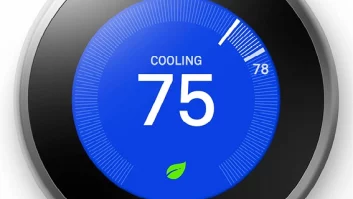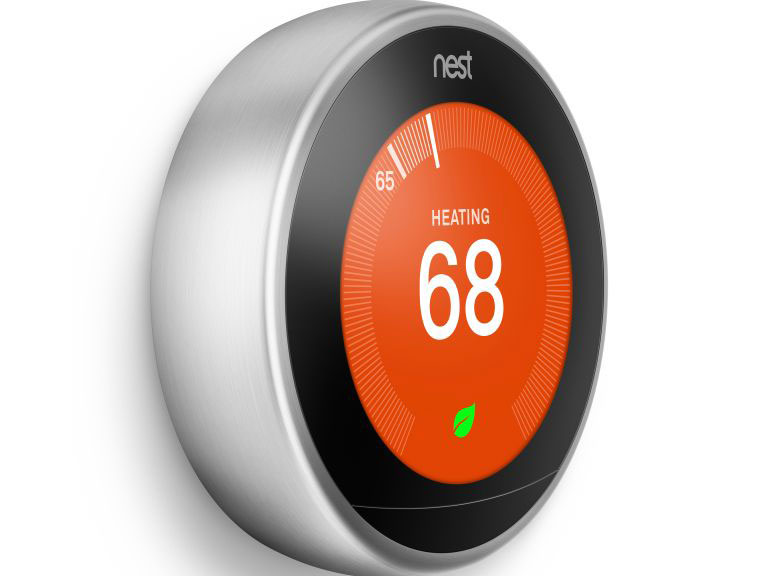
When Google announced on May 7 that it was moving its smart home devices under a new Google Nest brand, it was a landmark pivot in the company’s product strategy.
It’s more than just a branding play. Google has decided that it’s time to say goodbye to the smart home and hello to what it calls the “helpful home.”
Now that the announcement has had time to sink in, it’s worth taking a deeper look at:
- The torturous route that Google took to join two of technology’s most iconic brand names.
- The underpinnings of the new branding strategy.
- How Google envisions the next phase of the marriage between technology and your life.
See also: What Is A Smart Home?
When Google planted the smart-home flag
Google purchased Nest – name, people, and technology – for $3.2 billion in early 2014. Analysts hailed it as a bold move.
The world’s best-known tech company was becoming a player in a smart-home market that was expected to grow by billions of dollars over the next decade. And all it took was about 5 percent of its cash reserves, which was practically couch-cushion money for Google.
But the crystal ball was a little cloudy. Would Google use its considerable muscle to push Nest to greater heights of innovation and reinvention? Or would it thrash around in search of a strategy in an “Internet of Things” that was only beginning to mature?
No doubt, Google’s acquisition of Nest was a game-changer. But it was a surprisingly turbulent ride to arrive at what looks to be the final destination.
See also: These Are The Top 10 Most Valuable Tech Brands
Alexa says hello
At the time of Google’s purchase of Nest, heavy pressure was being applied by another technology giant. Amazon introduced Echo, the now-ubiquitous smart speaker that features Alexa. For the first time, a smart-home device could play music, answer questions, create to-do lists, and even order pizza.
It was a baby step in the development of artificial intelligence, but it developed at a rapid pace over the next couple of years. It gave Amazon a decided advantage in the smart home wars.
Going nowhere, slowly
Meanwhile, Google’s smart-home efforts had become stuck in the mud with disagreements over product development and business strategy, as well the departure of key Nest executives.
When Google finally answered Echo in 2016 with its a smart speaker/voice-activated assistant, the Nest brand was nowhere in sight. Instead, it was called Google Home.
Living separate lives
Nest was also bumping along apart from Google, with slower product development than expected. It continued to develop new iterations of its flagship Nest Learning Thermostat, and introduced its second product – the Nest Protect smoke and carbon monoxide detector in 2013.
Next came the Nest Cam security camera in 2015 (thanks largely to a $555 million purchase of Dropcam), followed by the release of a premium Nest Cam IQ in 2017.
See also: TWICE 2019 Top 100 CE Retailers Report: Sales Top $140B
Nest plunges into home security
The brand finally caught some major traction in September 2017 with the release of the Nest Secure home security alarm system, a DIY system with professional monitoring from Brinks Home Security. That was quickly followed in 2018 by the Nest Hello video doorbell and the Nest X Yale Lock.
But the question still remained: Why would a company – even with the size and brand power of Google – create smart-home products without leveraging Nest as arguably the best-known smart-home brand?
One brand is better than two
Fast forward to the Google I/O 2019 conference. Nest had been treated as a distinct entity until it was folded into Google’s smart home division in 2017. That cleared the way for the unification of all of Google’s smart home technology as a single product family under the Google Nest brand.
It has taken longer than it should have for Google to find its way forward with the Nest brand. Then again, companies that are worth nearly $1 trillion can afford to stub their toe occasionally.
But is the marriage of the two brands the right move at the right time?
Making up for lost time
As of January 2019, Amazon Echo, Dot and related Alexa devices control approximately a 61 percent U.S. market share, according to voicebot.ai, Google Home and its related devices have been steadily gaining ground to reach a 24 percent market share. Those figures represent a market share loss for Amazon of nearly 11 percent during the previous year, while Google Home rose approximately 5.5%.
For a company that already is building smart-home momentum, the Google Nest rebrand isn’t just the best way to keep the pace. It’s likely to be an effective booster rocket.
See also: 2019 TWICE Top 100: Hottest Products
The path forward
Rishi Chandra, Vice President of Product and General Manager of Google Nest, has a clear vision of the strategic landscape for its smart-home devices.
“The portfolio will be called Google Nest, just like (the smartphone portfolio) Google Pixel,” Chandra recently told Fast Company. “We’re aligning Pixel with mobility, and Nest will be about home.”
As for new products, Chandra said, the goal for now will be giving new products a Nest identity. Other products such as Google Home and Google Home Mini will get the new branding gradually.
“These things are never instantaneous,” Chandra added.
Rebrand, then revolution
In an interview with The Verge, Chandra said the rebranding is more than just a name change. It’s the next step in the evolution of computing and technology:
- Twenty years ago, the Internet started becoming an indispensable part of everyday life.
- About 10 years later, computing went mobile with smartphones and tablets.
- We’re now entering a new phase called “ambient computing,” which incorporates elements of machine learning and artificial intelligence.
No user required
Until now, interaction with a computer has typically required a user. Whether you’re using social media or sending an email, it requires some action on your part.
Ambient computing doesn’t require active participation. The Nest Learning Thermostat is a prominent example. It learns more about your environment, your lifestyle, and even the seasons. You can control it manually, but it can automatically adjust without your intervention.
Smart speakers and virtual assistants are more sophisticated examples. They recognize and learn, then adjust accordingly to provide the optimal response or action.
Separate devices, one ecosystem
If that sounds a little confusing … well, it is. Chandra told The Verge that smart-home devices will be proactive – learning from a user’s behaviors or even facial recognition – and will all work together in one ecosystem.
“There’s not one device that makes your home smart,” Chandra said. “Each device has different types of sensors, and inputs and outputs, and capabilities. But from the user standpoint […] it should feel like it was architected as one system design that all works together.”
And that’s where the rebrand comes in. Chandra said the challenge is to “bring together our product and assets to actually go solve the next generation of computing that we have to put in the home. That’s what really drove this push to actually bring Nest and Home together – to actually think of this in a very different way.”
See also: TWICE 2019 Top 100 CE Retailers Report Methodology
Robert Ogle is a writer and editor with seven years of experience in the home security industry. He currently is Senior Copywriter at Brinks Home Security and was formerly editor of Security Nation magazine for the Electronic Security Association. Robert also focuses on smart-home technology trends, as well as the impact of disruptive innovation. Connect with him on LinkedIn at linkedin.com/in/robertogle/.




